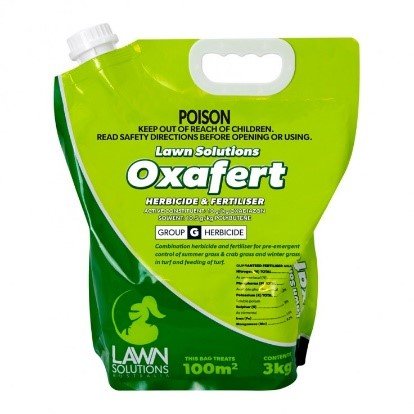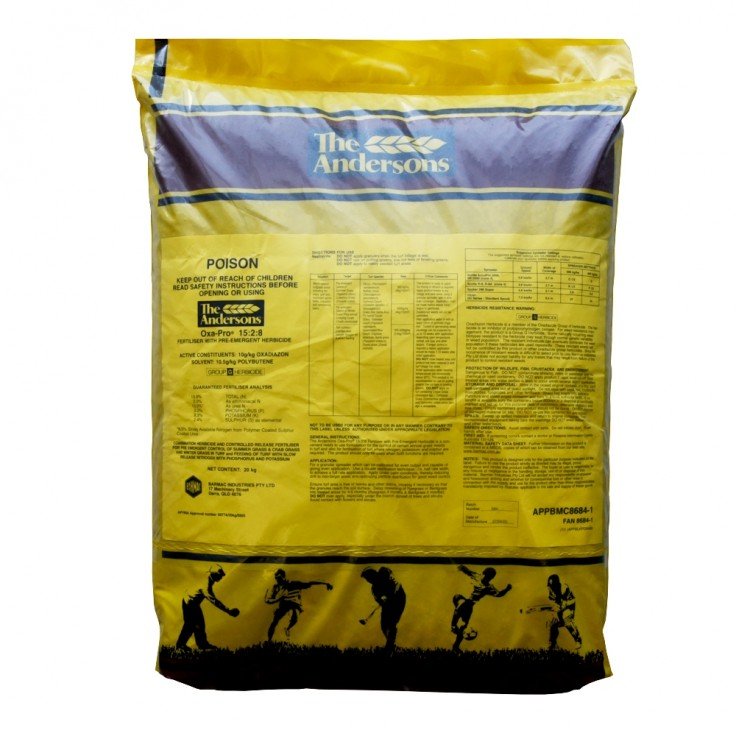Complete Guide to Lawn Fertiliser
When looking at lawn care products, you will often hear the name fertilisers and herbicides used a lot. In this blog, we look at what exactly fertilisers and herbicides are, the different types available, and when you should use them on your lawn.
Fertilisers
Your lawn is like any other plant. It needs oxygen, water, sunlight, and nutrients to thrive. If your soil is lacking in nutrients, it won’t be able to perform to its full potential. Fertilisers can be used to help replace missing nutrients.
The 3 main macro-nutrients your lawn needs to thrive are nitrogen, phosphorus, and potassium otherwise known as NPK.
Nitrogen is largely responsible for the growth of the leaves and is the most talked about nutrient when it comes to lawns.
Phosphorus is largely responsible for root growth.
Potassium is a nutrient that helps the overall functions of the plant perform correctly. Potassium also helps the plant use nitrogen efficiently.
Fertilisers usually contain other micro-nutrients like iron, calcium, sulphur, zinc, manganese… the list goes on!
Different types of fertilisers
There are many different types of fertilisers available, from liquids to granular, slow release, fast release, and controlled release.
Granular fertilisers are a popular option and are easy to apply. Granular options are usually available as a slow release and will deliver nutrients to the lawn over a certain period. They are best spread out using a fertiliser spreader to help apply the product evenly.
Liquid fertilisers will provide much quicker results as they are absorbed into the leaf blade of the grass. They are best applied to a lawn using a knapsack or pressure sprayer.
When to apply
Granular fertilisers are best to only be applied 2-3 times a year. Once in Spring, Summer, and Autumn. We recommend using the long weekends as a guide on when to do this, October long weekend, Australia Day, and the Easter long weekend.
Liquid fertilisers can be applied more frequently as they are absorbed and used by the plant faster. Monthly applications of liquid fertilisers are usually recommended when active growth is present or when nutrient deficiency symptoms are visible.
Product recommendations
Lawn Solutions Premium Fertiliser contains a combination of slow and fast release granules that will give your lawn a quick initial boost and will continue to feed the lawn for up to 12 weeks. This is a well-balanced fertiliser that contains all the essential nutrients your lawn needs to stay healthy and is suitable for all lawn varieties.
Exceed Liquid Fertiliser is a great liquid fertiliser option. Exceed will give your lawn a quick boost as it is absorbed by the leaf of the grass.
Herbicides
If your lawn has weeds or other grasses growing in it, a herbicide can be used to remove it. There is a vast range of herbicides available, some will remove all plant material including grass and others are selective herbicides that target a specific weed.
When using herbicides, you will need to read the label to ensure the herbicide you are using is safe for your lawn type.
Different types of herbicides
There are a few different types of herbicides available.
Pre-emergent herbicides like Oxafert will help stop weed seeds that are already in your lawn, stopping the weed before it grows and spreads. These types of herbicides target seasonal weeds like Winter Grass, Summer Grass, Crabgrass/Crowsfoot, Creeping Oxalis.
Post-emergent herbicides will remove the weeds that are already growing in the lawn.
The most common type of herbicide on the market is a broadleaf herbicide like All Purpose Weed Control or Amgrow Bin Die. These will remove common broadleaf weeds like Bindii, Clover, Catsear, Creeping Oxalis, Cudweed, and Plain Thistle.
For other types of weeds, you will need to use a specific type of herbicide of the weed you are wanting to remove. For more information on what herbicide you should use to target a specific weed, check out our other blogs here.
When to apply
When using pre-emergent herbicides, it is best to time your application just before the seeds start to germinate. To stop seasonal winter weeds like Winter Grass it is best to apply a pre-emergent in mid to late Autumn, or when the temperatures start to drop in your location. To stop seasonal summer weeds like Summer Grass and Crabgrass/Crowsfoot apply a pre-emergent in early to mid-spring or when the temperatures are starting to warm up.
When treating weeds that have already started to grow, it is best to treat them as early as possible to help prevent them from spreading throughout the lawn.
Weed n Feed products
When it comes to removing weeds and fertilising, a product that does both sounds perfect, right? However, we recommend using both weeding and feeding products separately to achieve better results. Weed n Feed products contain a small fertiliser and herbicide component. When applied they don’t contain enough of either to benefit the grass. Please have a look here for more information on why we recommend this here.






